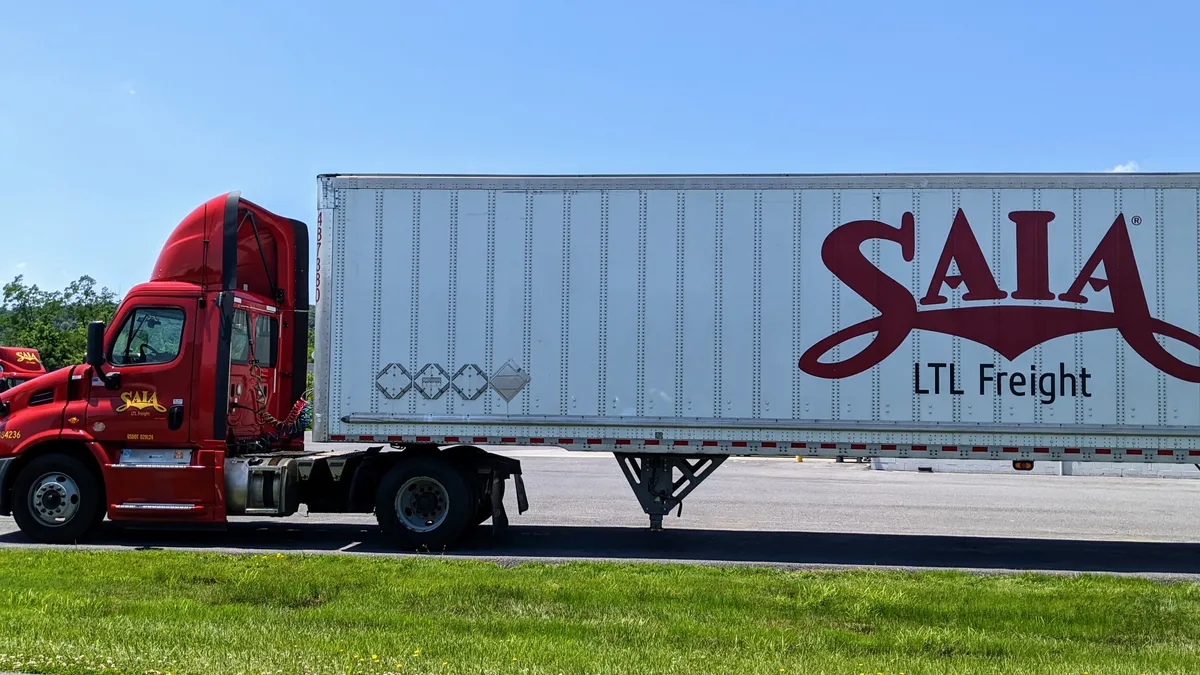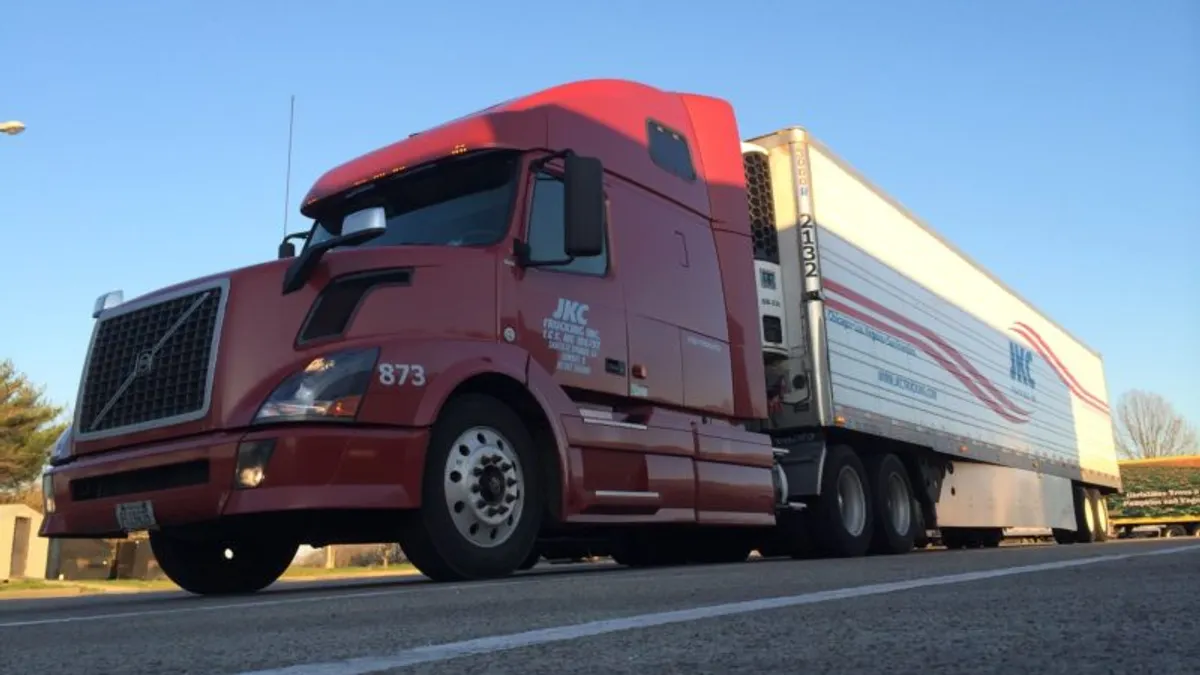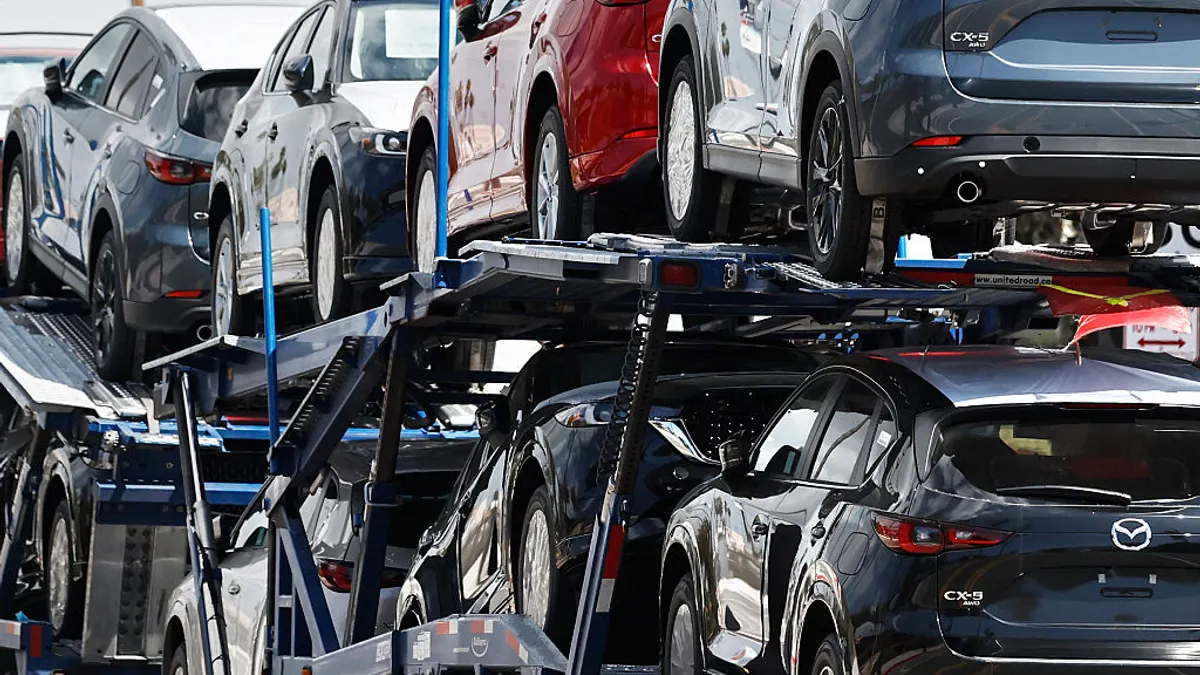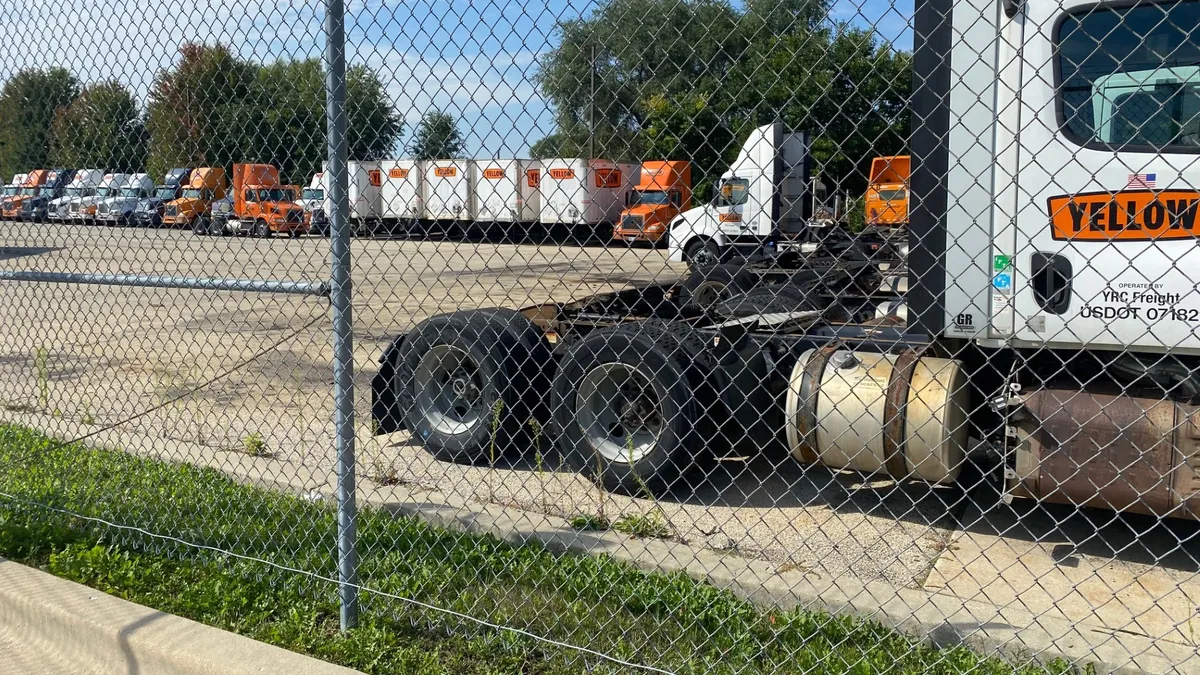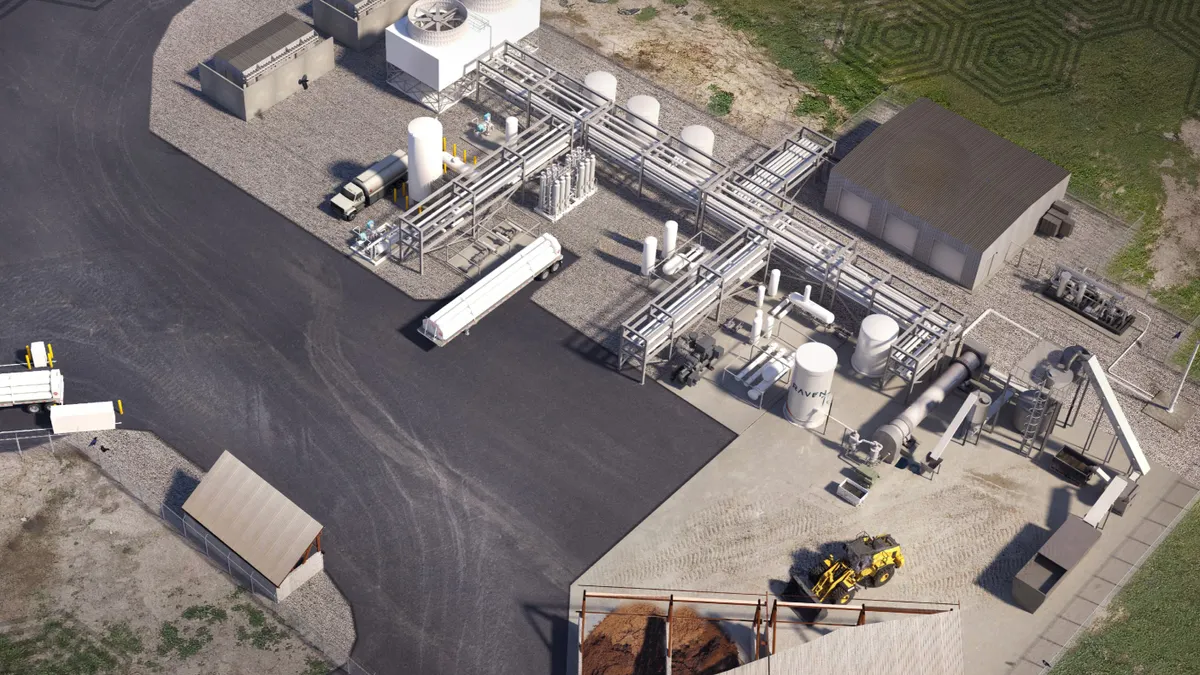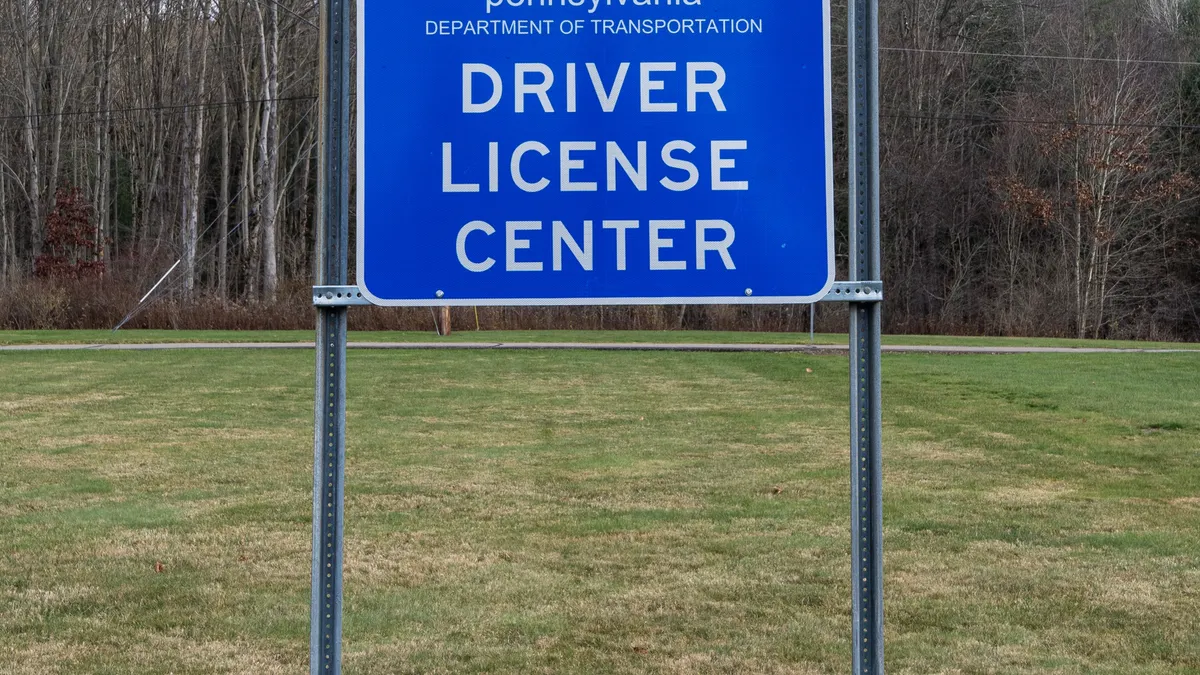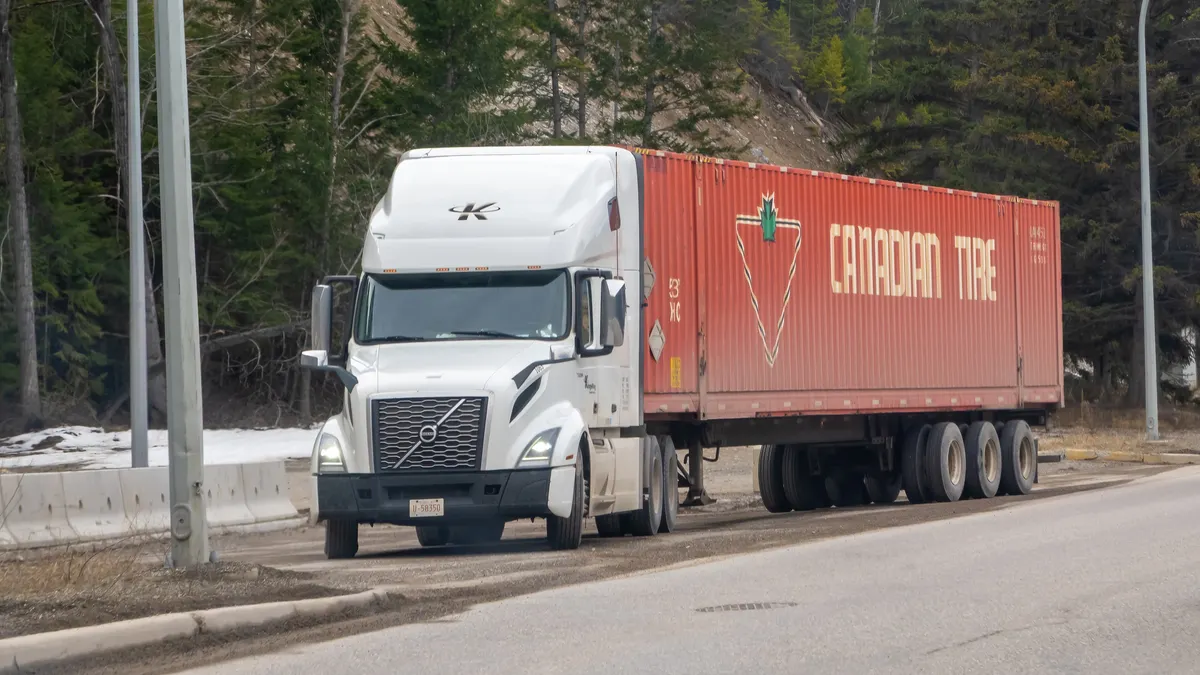This story is part of the Transport Dive Outlook on 2021, a series on the trends that will shape the industry in 2021. For a look at the business trends affecting other industries, see the Dive Outlook on 2021.
When President-elect Joe Biden was named as the next commander in chief, the spotlight turned to Georgia, where Senate races would head to a runoff the first Tuesday in January.
Raphael Warnock and Jon Ossoff were declared winners in that race Wednesday, giving Democrats a narrow Senate majority.
Experts have anticipated a divided Congress, but even the slimmest congressional advantage paves an easier lawmaking path for the Biden administration. The trucking industry will watch for the effects on environmental and infrastructure policy, in particular.
Inauguration this month will mark the official exchange of the reins, and a green light for Congress to begin the process of approving (or not) Biden's Cabinet picks, including Pete Buttigieg for Transportation secretary.
"What does not happen on Jan. 20, is that the new administration does not get full effective control of the executive branch. It takes quite a while to get senior positions filled, particularly those positions that require Senate confirmation, and there are about a dozen of those at the Department of Transportation," said Jim Burnley, partner at consulting firm Venable, during a webinar in early December.
During President Barack Obama's first term, the last instance of an administration switching from Republican to Democrat, Ray LaHood was confirmed as DOT secretary two days after inauguration in 2009, Burnley said, but the FMCSA administrator wasn't confirmed until early November. The FMCSA has a recent history of functioning without an appointed permanent boss. All departments continue their day-to-day operations in the meantime.
Safety and compliance to-dos
Several regulatory initiatives from 2020 will carry over, forming a long to-do list in 2021 for the FMCSA.
"I believe FMCSA will have a full plate of projects that were placed on the back burner the past 4 years," former agency official Rose McMurray said via email in November. She specifically pointed to underride protection, the rule on sleep-disorder testing and speed-limiting equipment.
Just before the new year, the FMCSA made a move toward checking the first item off the list. On Dec. 29, the agency released a notice of proposed rulemaking to include rear-impact guards in required annual inspections. The public-comment window closes March 1.
The final HOS rule came out last year, but some loose ends remain. Former agency official and HOS expert Tom Yager said in November that he calls the regulation "the continuing saga, because it is constantly in federal court."
Safety and labor groups, no strangers to court battles over HOS, petitioned the court in September. It is unknown what impact that might have, or action that case might see, this year.
Other carryovers from 2020 topics for which the FMCSA solicited public comments. That includes broker transparency, pausing the 14-hour driving window and allowing drivers under the age of 21 to operate trucks across state lines. The agency could propose rules on these items, or it could spend the year gathering more data.
McMurray said the FMCSA is also likely to continue working on its Compliance, Safety, Accountability program this year. "FMCSA will want to get the system 'right and fair' and will work to get there," she said.
"What does not happen on Jan. 20, is that the new administration does not get full effective control of the executive branch."

Jim Burnley
Partner at Venable
When examining safety, the FMCSA and DOT will continue looking at advanced driver-assistance systems, Ariel Wolf, a partner at Venable, said during the December webinar. ADAS will be examined alongside technology being developed for fully autonomous trucks.
The 5.9 GHz spectrum is also a question mark the agencies will need to address, Wolf said. The Federal Communications Commission recently repurposed more than half the spectrum for Wi-Fi, taking it away from trucks, "to the great chagrin of DOT and others," he said. There will "probably" be an effort to reverse that decision, Wolf said, which could involve legislation. By regaining the spectrum, the DOT could resume technology development on dedicated short range communication, which Wolf said has been sidelined.
Lawmaking to-dos
"If the Senate is won by a Democratic majority, expect regulatory revivals of Trump-era rule/policy rescissions," McMurray wrote last year.
President Donald Trump's administration has rolled back rules in environmental policy. Biden and Buttigieg have made it clear that climate would be an integral part of their agendas.
We will make sure that creating jobs, tackling the climate crisis, and centering equity are at the heart of our transportation and infrastructure vision. pic.twitter.com/B3IA5X9jk1
— Pete Buttigieg (@PeteButtigieg) December 21, 2020
A Democratic administration will be more favorable to unions and policies that concern wages and working conditions. Yager said although the FMCSA has no jurisdiction over driver wages, a Congress in which Democrats have the majority could take up some of those issues.
Worker classification regulations come from the Department of Labor, which released a final rule Wednesday codifying how to determine whether a worker is an employee or independent contractor.
Congress will also need to try to pass an infrastructure bill this year to keep programs going and feed the Highway Trust Fund. Lawmakers punted on doing so last year, instead opting to extend the existing law until Oct. 1, 2021.
Wolf said during the December webinar that a Republican-majority Senate would have been more likely to prioritize an infrastructure bill. Though, he added, infrastructure plays a crucial role in economic recovery from the pandemic, so it will still be a top priority for Congress.
"I think it's hard to see a scenario where it's not front and center," he said, referring to infrastructure, with a disclaimer that everything can change on a dime, as was the theme of 2020.
"I think it's hard to see a scenario where [infrastructure is] not front and center."

Ariel Wolf
Partner at Venable
In the $1 trillion infrastructure plan Buttigieg unveiled in January 2020 as part of his presidential campaign, he outlined a goal of making the HTF solvent for the first time since 2008. An insolvent fund causes "uncertainty about whether states can complete critical projects," his year-old plan reads, showing his goal of being an ally to state and local governments — an objective borne out of his experience as mayor of South Bend, Indiana.
Buttigieg's plan for making the HTF solvent requires the DOT to propose a new user-fee-based system, such as vehicle miles traveled, which is generally unpopular with the trucking industry. The American Trucking Associations is opposed to VMT, while members of the Owner-Operator Independent Drivers Association are "skeptical" such a fee would be the solution.
A Democratic majority in the Senate will also give Biden an avenue to push through tax plans, which, according to the New York Times, would hike taxes on corporations and people in the top tax brackets to fund road and bridge repairs, as well as carbon-free initiatives.




